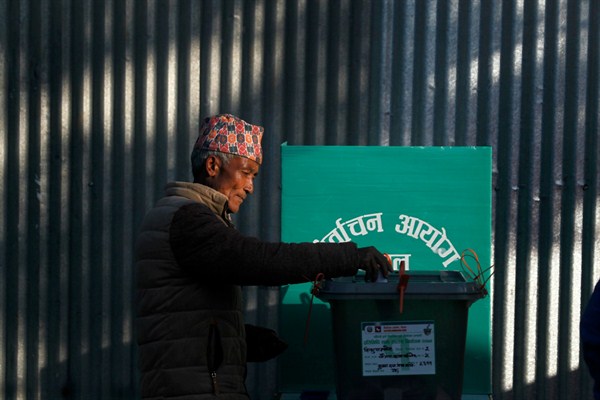KATHMANDU, Nepal—Scarred by a civil war in the 1990s, and sapped by constitutional crises in the decade after, Nepal is finally facing some prospect of electoral democracy and constitutional stability. On Dec. 7, it successfully concluded elections for national and state legislatures, implementing the most important and challenging aspects of its 2015 constitution, which was adopted despite sustained opposition from some ethnic minority groups.
The elections were a landmark moment for a Nepali state experimenting with the devolution of power at municipal, state and federal levels all at once and for the first time since the formation of the Kingdom of Nepal in the 18th century. There are still serious questions about how inclusive and equitable this new political system will be for historically marginalized segments of the population. In the build-up to last week’s vote, earlier this year Nepal also conducted its first local polls in 20 years, electing over 30,000 municipal representatives, spread across its seven new states.
But Nepalis are not just cheering the historic nature of this month’s vote. They are hoping, at last, to have a strong and stable central government after nearly three decades of chronic political uncertainty, where the average lifespan of a government was nine months. To get there, voters have given an overwhelming mandate to a coalition of parties termed the Left Alliance.

